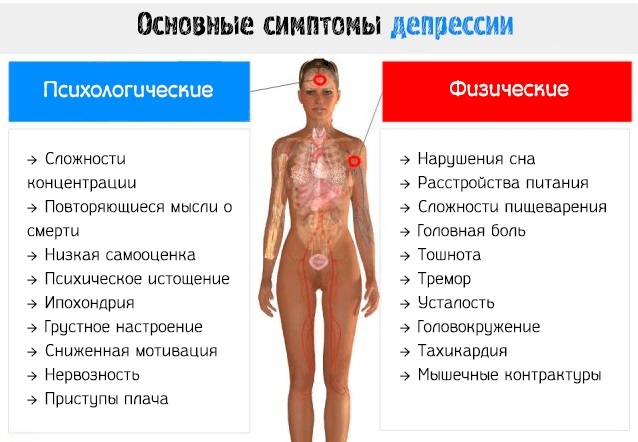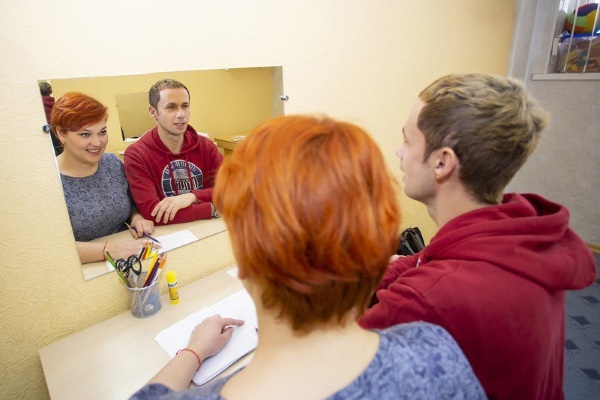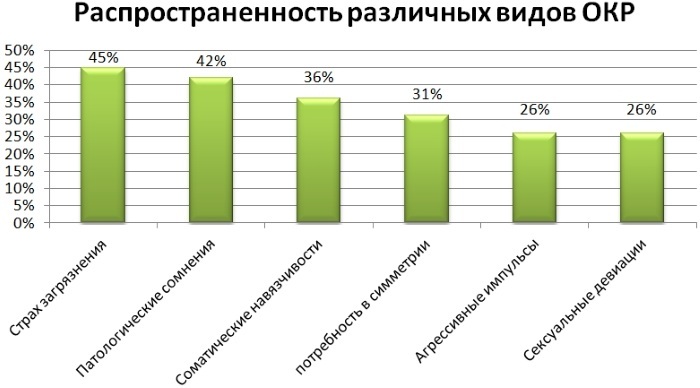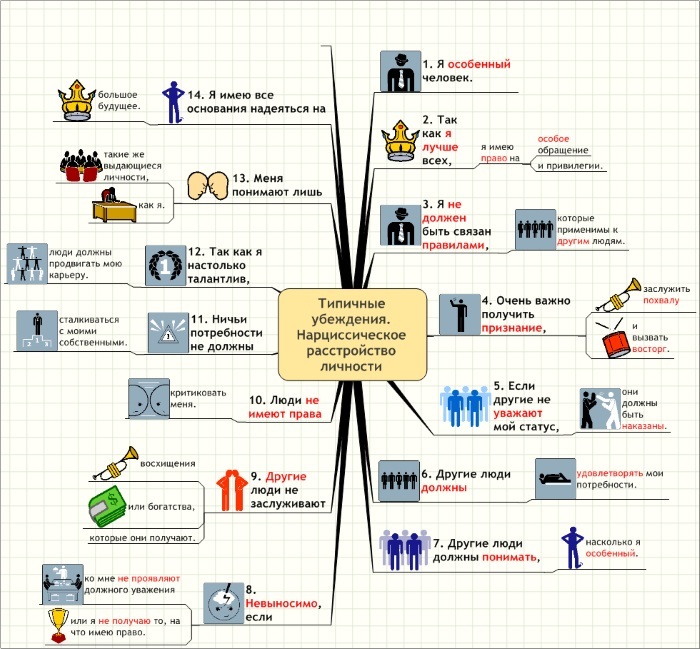Pathology such as slow speech tempo, creates serious obstacles to normal communication. You can cope with the problem, but this will first require a comprehensive examination to identify the causes its occurrence, and then - the help of specialists for the development of an individual method of normalizing the tempo and rhythm speech.
Record content:
- 1 General information about the disease
- 2 The reasons for its development
- 3 Symptoms
- 4 Typical difficulties
- 5 Diagnostic methods and necessary examinations
- 6 The main methods of treatment and correction
- 7 What to do for parents if a child has speech impairments
- 8 General tips for making speech easier to understand
- 9 Forecast
- 10 Video about bardilalia
General information about the disease
Bradilalia is a speech pathology, which is expressed in its obviously slowed down pace. At the same time, the speed of thinking, reading, writing suffers, long pauses appear between words, sounds stretch, and the brightness of intonations is lost. From the point of view of speech therapists, this is a syndrome of violation of the tempo-rhythmic side of speech of a non-convulsive nature.
As an independent phenomenon, and not as a symptom of psychosomatic and neurological diseases, it has been studied since the end of the 19th century. that the main role in the mechanism of its development is the unnatural intensification of the processes of inhibition in the central nervous system, which ultimately suppress the processes excitement. Neurodynamics is changing, the number of mediators is decreasing.
Speech therapists distinguish several degrees of development of bradilalia:
- light (pauses between words and syllables, other speech disorders typical of the disease are practically invisible to others, the one who has a pathology also does not pay attention to it);
- moderate (obviously slow speech, strongly stretched vowels);
- heavy (long pauses between words and syllables, strong inhibition of thinking, as a result - problems with the development of speech and intelligence, further adaptation in society).
Separately, cerebellar bradilalia arises from damage to this part of the brain. It is characterized as if by a chanted speech.
A pathologically slow speech rate as an independent disease is most often manifested in phlegmatic people, slow and sluggish by nature. Bradilalia is also a concomitant symptom of other diseases or their consequences.
In the latter version, it is complemented by other symptoms - bradykinesia (slow motion), fatigue (physical and mental), severe weakness, apathy, slow reactions.
First of all, if there is a suspicion of bradilalia, it is necessary to contact a speech therapist, psychologist and neurologist for a comprehensive examination. Confirming the diagnosis may require the help of other specialists, for example, a psychotherapist.
A pathologically slow speech tempo may simply be a local feature. For example, this is noted when communicating with residents of the Scandinavian and other northern countries. But for them it is natural.
The reasons for its development
Most often, the development of bradilalia is due to biological reasons:
- Genetics. The presence of close relatives (and even more so parents) with the corresponding pathology increases the chances of descendants to inherit it.
- Damage to the central nervous system of a child in the womb, or during childbirth. It can be like the fault of the woman herself (smoking, drinking during pregnancy, other bad habits), and circumstances beyond her control (conflict of Rh factors of parents, carbon monoxide poisoning gas). During childbirth, traumatic brain injury in the child, hypoxia are possible.
- Congenital or acquired oligophrenia, Parkinson's disease, Alzheimer's disease, Huntington's disease, dementia, cerebral palsy, disseminated sclerosis, past meningitis, encephalitis, stroke, severe intoxication of the body with certain infectious diseases or chronic alcoholism.
- Intracranial tumors, including benign ones (sometimes bradilalia is a consequence of operations to remove them).
- Traumatic brain injury of varying severity.
- Frequent depression (or it is in a chronic form).

- General psychophysiological exhaustion of the body (asthenization).
- Side effect of taking drugs that affect the central nervous system (eg, strong narcotic analgesics, anticonvulsants)
Slow speech rate in children is also influenced by psychosocial factors:
- neglect of the upbringing and development of the child's speech;
- lack of communication with adults;
- imitation of a person with a similar pathology.
Symptoms
Its speech symptoms are quite obvious in dialogue and other forms of communication with a person suffering from bradilalia:
- unnaturally inhibited tempo of speech (oral and written);
- monotonous voice, devoid of almost all intonations, does not change timbre, volume and pitch, lack of emotion in speech (sometimes there is a tendency to speak "in the nose");
- long pauses between sentences, words or individual syllables in a word, unnaturally stretched vowels;
- chanting words;
- "Blurry" articulation.
Accordingly, with bradilalia, sounds and words are formed normally, phrase formation also does not suffer. But it is rather difficult for a person who does not have constant practice in this to perceive speech with an unusual rhythm and at a pathologically slow pace. The listeners have a rapid depletion of attention, mental fatigue, mental discomfort.
The described symptoms are noted in all forms of speech - in dialogues, monologues (a story on a specific topic, description of paintings or their series), retelling of what has been read. With bradilalia, the pace of reading, writing, even the flow of thoughts inevitably suffers. Moreover, the more complex the phrases and themes of reflections, the more obvious it is.
Speech symptoms are complemented by non-speech:
- problems with general and especially fine motor skills (decreased activity of the muscles of the face, discomfort, if necessary, to work with fingers);
- slow awkward movements, obvious clumsiness, lack of coordination;
- frequent aimless repetition of certain movements;
- almost complete absence of facial expressions;
- difficulties with perception, concentration, memorization, understanding of instructions, orientation in space and time;
- inability to quickly change the type of activity, switch;
- in adults - a tendency to stereotypy in all its manifestations.
Typical difficulties
A mild degree of bradilalia, which manifested itself at the time of the formation of speech - in 70-90% of cases, the disease develops in children aged 2-4 years - they themselves are not noticed. Parents should pay attention to lack of interest in the world around them, reluctance to enter into conversations and other forms of communication with peers, inactivity and apathy.
Adolescents and adults are fully aware of the problem, psychological experiences are added to it, stuttering often develops. The consequence is isolation and loneliness, often provoking chronic depression.
Diagnostic methods and necessary examinations
If you suspect any speech disorder, consultation of 3 specialists is necessary - a speech therapist, a neurologist and a psychologist (on their recommendation, an appeal to a psychiatrist is often required). This is the only way to comprehensively and objectively assess the patient's psychosomatics.
For each specialist, the examination begins with a detailed explanation of the anamnesis.
To be specified:
- how the patient himself (or the child's parents) sees the problem;

A pathologically slow speech rate is diagnosed by a psychologist, speech therapist-defectologist, etc. doctors - how long ago the symptoms appeared, whether they became more pronounced over time;
- what happens when you try to speed up the rate of speech;
- how was the mother's pregnancy and childbirth;
- whether in the past there were traumatic brain injuries, other diseases that could provoke bradilalia.
Further, the speech therapist conducts diagnostics of oral and written speech.
This includes:
- assessment of the correctness and timing of pronunciation of words and syllables, the structure of words;
- study of the rhythm, tempo of speech, characteristics of the voice;
- the speed of writing (the text is dictated or the patient writes it off himself), reading (normal and syllable);
- analysis of the state and tone of muscles responsible for articulation, rhythm and accuracy of their contraction.
A neurologist and psychologist assess the patient's intellectual abilities (IQ test), emotionality and sensitivity, facial expressions, motor skills, and sensory functions.
A severe degree of bradilalia often requires additional examinations:
- EEG or REG (electro- or rheoencephalography);
- Ultrasound of the vessels of the neck;
- MRI of the brain (conventional or computerized);
- PET (positron emission tomography);
- lumbar puncture.
Instrumental studies and neuroimaging are necessary to rule out or confirm the somatic causes of bradilalia. Depending on the cause of the disease, the treatment regimen changes dramatically.
The main methods of treatment and correction
The pathologically slow rate of speech for each patient is adjusted individually, a special scheme of classes and medication is developed. The duration of the course is at least six months (usually 9-12 months). It is impossible to get rid of bradilalia without an integrated approach to its treatment and strict implementation of the recommendations of specialists.
| The main therapeutic methods in the fight against bradilalia | |
| Specialist | How can help |
| Psychotherapist (depending on the patient's age - child or adult). | Normalize the psychological state, get rid of depression and self-inferiority complex, facilitate adaptation in society, restore social skills. Autogenic training helps to relieve psychological stress (a kind of "emotional relief"). |
| Speech therapist | Accelerate the tempo of speech by increasing its clarity. Tongue twisters, phrase-mongering, reading by roles, other activities to improve articulation, logo rhythmics help children well (the specialist sets and maintains the tempo of speech, for example, claps, conducting). Speech "to oneself" develops tasks where you need to turn on your imagination and strain your memory. Adults are encouraged to practice public speaking, providing the formation of expressive and emotional speech, facial expressions. |
| Neurologist, therapist | Drug therapy - B vitamins (to stimulate brain activity), vitamin C (to increase the general tone of the body), nootropic drugs (to activate memory, ability to training, improving the functioning of the brain as a whole and increasing its resistance to stress), drugs with glutamic acid (to maintain the nervous system in good shape, this is a kind of "source of energy" for brain). |
| Physiotherapist | Restoration of muscle tone, normalization of motor skills, removal of general physical tension. Most often, different types of massage are practiced, kinesiotherapy, balneotherapy. |
The most important in the treatment process are classes with a speech therapist and consultations with a psychotherapist. In addition to the above, any physical activity will be very beneficial. Adults can start with swimming and water aerobics, exercise therapy, cycling, dancing.
Children are also recommended outdoor games, assembling constructors, puzzles, creativity in any form - applied (for development of fine motor skills), singing, playing musical instruments, memorizing and reciting poetry, participating in performances.
What to do for parents if a child has speech impairments
It is easier to bring a pathologically slow speech rate in children back to normal, especially if parents help the speech therapist and psychologist. Regular homework with your child is a very significant aid to professionals in the treatment of most speech disorders.
The following exercises are recommended:
- Counting at a fast pace and in a certain rhythm, which the parent supports with claps, tapping. With very young children, they count up to 5, with those that are older - up to 10, with schoolchildren - up to 100. They can also complicate tasks, while training thinking - counting from one number to another, counting down, counting in twos, threes.
- Clear pronunciation of syllables with voiceless and voiced consonants. For example, "tra-dra", "cro-gro", "vri-free", "sbo-zpo", "zba-spa", "pshu-bzhu". By analogy, it is easy to compose your own letter combinations.

- Rapid sequential replacement of a letter in a word so that another word is obtained ("poppy-crayfish-bak", "rum-mouth-rock", "bump-night-dot").
- Learning and singing songs.
- For schoolchildren who are already familiar with the concept of "phraseological unit" - a quick explanation of the meaning of popular idioms in a few words.
- Memorizing and pronouncing tongue twisters and phrases. At the same time, the rate of speech should be gradually increased.
- Reading and reciting poetry by heart. So that the child does not lose the rhythm, the parent beats him off with claps and kicks. It is very convenient to use the metronome.
- Linking speech with movement. For example, while reading the poem "My cheerful ringing ball ..." the child simultaneously imitates hitting the ball or throwing it with his hand.
General tips for making speech easier to understand
In everyday life, adults and children in order to make speech in slow motion was better recognized by the interlocutor, speech therapists recommend the following techniques:
- Accentuated pauses between exhalations during a conversation. At a normal pace and rhythm of speech, they fall at the end of sentences, and do not break words and syllables, as with bradilalia.
- Breathing exercises. If you master diaphragmatic breathing and learn to use a larger than usual volume of the lungs, the voice will become stronger, a characteristic individual timbre will appear, it will be less noticeable monotone.
- The use of gestures and facial expressions. It simultaneously restores and maintains muscle tone, trains fine motor skills. Such "illustrated" speech becomes more informative and understandable for the interlocutor.
- If possible - communication in a calm, psychologically comfortable environment. Noise, crowd, and other factors make it difficult to concentrate on the conversation, even for a person without speech pathologies.

If a pathologically slow speech rate appears around people, try to avoid noisy companies.
The first positive results when following these recommendations are noted in 1-2 months. Prior to that, psychologists advise not to lose touch with society, using alternative methods of communication - messaging on social networks, writing emails, blogging.
Forecast
The prognosis for bradilalia caused by psychosomatic factors and detected at an early stage of development, provided that a qualified speech therapist and psychologist are consulted in a timely manner, is favorable.
An integrated approach that combines modern methods of correcting speech disorders with consultations with a psychologist makes it possible to significantly improve the situation in 6-12 months. Subsequently, the pathology is practically invisible, the patient's normal tempo and rhythm of speech is restored.
If time has already been lost, and bradilalia has reached a severe degree of development, or its cause is biological, it is much more difficult to cope with the disease. But a competent combination of drugs and training with specialists allows us to achieve significant progress. And although the pathology will not completely disappear, the patient will be able to communicate more or less normally and, as a result, adapt in society.
To maintain the achieved effect, it is recommended to visit a speech therapist and a neurologist every year and a half for control examinations. The first can draw up a course of supportive exercises for regular performance at home, the second - a scheme for taking the necessary vitamins and medicines.
Also, the patient will need constant self-control. At the first symptoms that resemble a relapse, you can not delay the appeal to the attending physician.
Both the person himself and those who communicate with him suffer from a pathologically slow pace, an incorrect rhythm of speech. The reasons for the development of bradilalia can be both biological and psychological.
In general, the prognosis for the treatment of the disease is favorable if you turn to a neurologist, speech therapist, psychologist in time, other specialists and follow the treatment regimen developed by them, not forgetting about preventive measures in further.
Author: Julia Golova
Video about bardilalia
What is bardilalia and correction methods:



